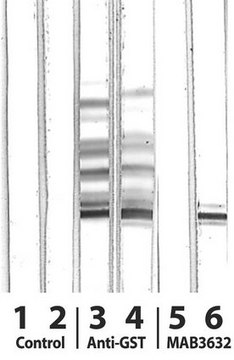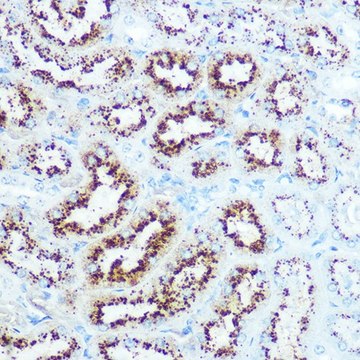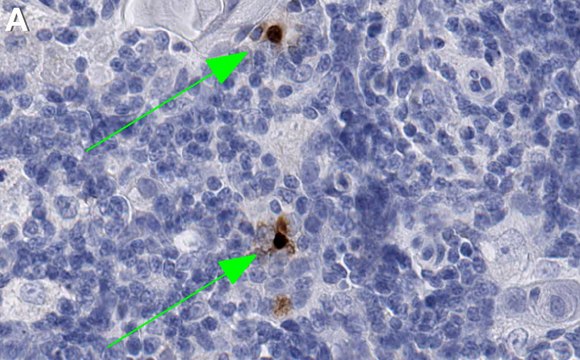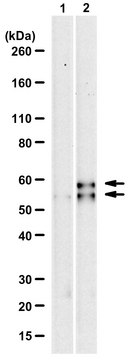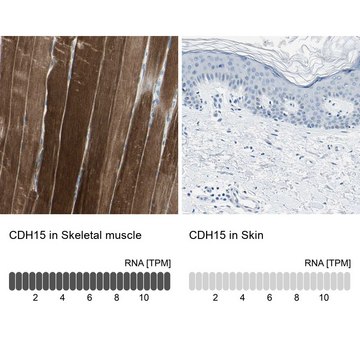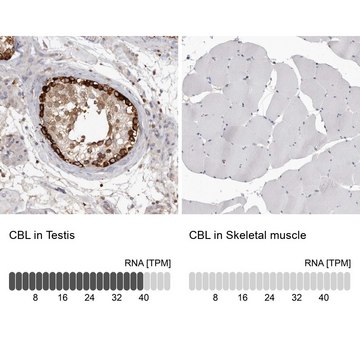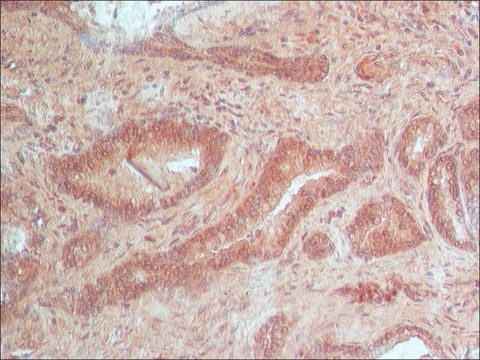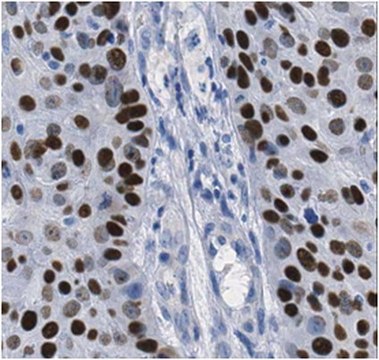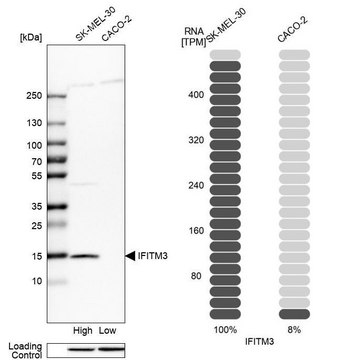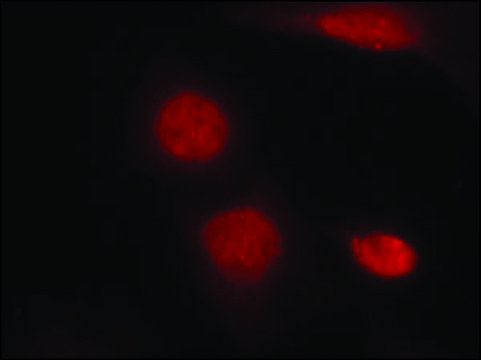04-816
Anti-phospho-PPARγ (Ser82) Antibody, clone AW504, rabbit monoclonal
clone AW504, from rabbit
Sign Into View Organizational & Contract Pricing
All Photos(2)
Synonym(s):
Nuclear receptor subfamily 1 group C member 3, PPAR gamma, peroxisome proliferative activated receptor gamma, peroxisome proliferator-activated receptor gamma, peroxisome proliferator-activated receptor gamma 1
UNSPSC Code:
12352203
eCl@ss:
32160702
NACRES:
NA.41
Recommended Products
biological source
rabbit
antibody product type
primary antibodies
clone
AW504, monoclonal
species reactivity
mouse, human, rat
technique(s)
western blot: suitable
isotype
IgG
NCBI accession no.
UniProt accession no.
shipped in
dry ice
General description
Peroxisome proliferator-activated receptors (PPARs) are nuclear receptors involved in lipid transport and metabolism. As such, their roles in chronic diseases such as diabetes, obesity, atherosclerosis and cancer are heavily investigated. Transcriptional activity of PPARs is regulated by fatty acid binding. Three PPAR isotypes have been identified: , and . PPAR stimulates lipolysis of circulating triglycerides and the subsequent uptake of fatty acids into adipose cells. PPARs can bind to DNA only as a heterodimer with the retinoid X receptor (RXR).
Specificity
PPARγ phosphorylated at Ser82, Mr 55 & 60 kDa.
Predicted to cross-react with rat based on sequence homology.
Immunogen
Epitope: pSer82
KLH-conjugated, synthetic peptide containing the sequence PApSPP in which pS corresponds to phosphoserine at residue 82 of human PPARγ.
Application
Research Category
Epigenetics & Nuclear Function
Epigenetics & Nuclear Function
Research Sub Category
Transcription Factors
Transcription Factors
Use Anti-phospho-PPAR gamma antibody, clone AW504 (rabbit monoclonal antibody) validated in WB to detect phospho-PPARγ (Ser82) also known as Nuclear receptor subfamily 1 group C member 3 & PPAR gamma.
Quality
Evaluated by western blot on NIH/3T3 L1 cells that were undifferentiated and differentiated into adipocytes.
Western Blot Analysis: 1:500 dilution of this antibody detected PPARγ phosphorylated at Ser82 in undifferentiated and acipocyte differentiated NIH/3T3 L1 cells.
Western Blot Analysis: 1:500 dilution of this antibody detected PPARγ phosphorylated at Ser82 in undifferentiated and acipocyte differentiated NIH/3T3 L1 cells.
Target description
~55 & 60 kDa
Linkage
Replaces: 05-816
Physical form
Cultured supernantant containing 0.05% sodium azide.
Format: Purified
Storage and Stability
Stable for 1 year at -20ºC from date of receipt.
Handling Recommendations: Upon receipt, and prior to removing the cap, centrifuge the vial and gently mix the solution. Aliquot into microcentrifuge tubes and store at -20°C. Avoid repeated freeze/thaw cycles, which may damage IgG and affect product performance.
Handling Recommendations: Upon receipt, and prior to removing the cap, centrifuge the vial and gently mix the solution. Aliquot into microcentrifuge tubes and store at -20°C. Avoid repeated freeze/thaw cycles, which may damage IgG and affect product performance.
Analysis Note
Control
3T3/L1 cells differentiated into adipocytes, PMA-stimulated THP-1 cells.
3T3/L1 cells differentiated into adipocytes, PMA-stimulated THP-1 cells.
Other Notes
Concentration: Please refer to the Certificate of Analysis for the lot-specific concentration.
Disclaimer
Unless otherwise stated in our catalog or other company documentation accompanying the product(s), our products are intended for research use only and are not to be used for any other purpose, which includes but is not limited to, unauthorized commercial uses, in vitro diagnostic uses, ex vivo or in vivo therapeutic uses or any type of consumption or application to humans or animals.
WGK
WGK 1
Flash Point(F)
Not applicable
Flash Point(C)
Not applicable
Regulatory Information
新产品
Certificates of Analysis (COA)
Search for Certificates of Analysis (COA) by entering the products Lot/Batch Number. Lot and Batch Numbers can be found on a product’s label following the words ‘Lot’ or ‘Batch’.
Already Own This Product?
Find documentation for the products that you have recently purchased in the Document Library.
An ERK/Cdk5 axis controls the diabetogenic actions of PPAR?.
Banks, AS; McAllister, FE; Camporez, JP; Zushin, PJ; Jurczak, MJ; Laznik-Bogoslavski et al.
Nature null
Jianhui Liu et al.
Cellular physiology and biochemistry : international journal of experimental cellular physiology, biochemistry, and pharmacology, 44(2), 423-435 (2017-11-16)
Multiple exposures to anesthesia in children may increase the risk of developing cognitive impairment. Sevoflurane is an anesthetic that is commonly used in children during surgery. Cyclin-dependent kinase (CDK) 5 is involved in the regulation of sevoflurane-induced cognitive dysfunction, but
Min-Dian Li et al.
Nature communications, 9(1), 5103-5103 (2018-12-07)
Palatable foods (fat and sweet) induce hyperphagia, and facilitate the development of obesity. Whether and how overnutrition increases appetite through the adipose-to-brain axis is unclear. O-linked beta-D-N-acetylglucosamine (O-GlcNAc) transferase (OGT) couples nutrient cues to O-GlcNAcylation of intracellular proteins at serine/threonine
Mengle Shao et al.
Cell stem cell, 28(4), 685-701 (2021-02-05)
Adipose precursor cells (APCs) exhibit regional variation in response to obesity, for unclear reasons. Here, we reveal that HIFα-induced PDGFRβ signaling within murine white adipose tissue (WAT) PDGFRβ+ cells drives inhibitory serine 112 (S112) phosphorylation of PPARγ, the master regulator
Our team of scientists has experience in all areas of research including Life Science, Material Science, Chemical Synthesis, Chromatography, Analytical and many others.
Contact Technical Service